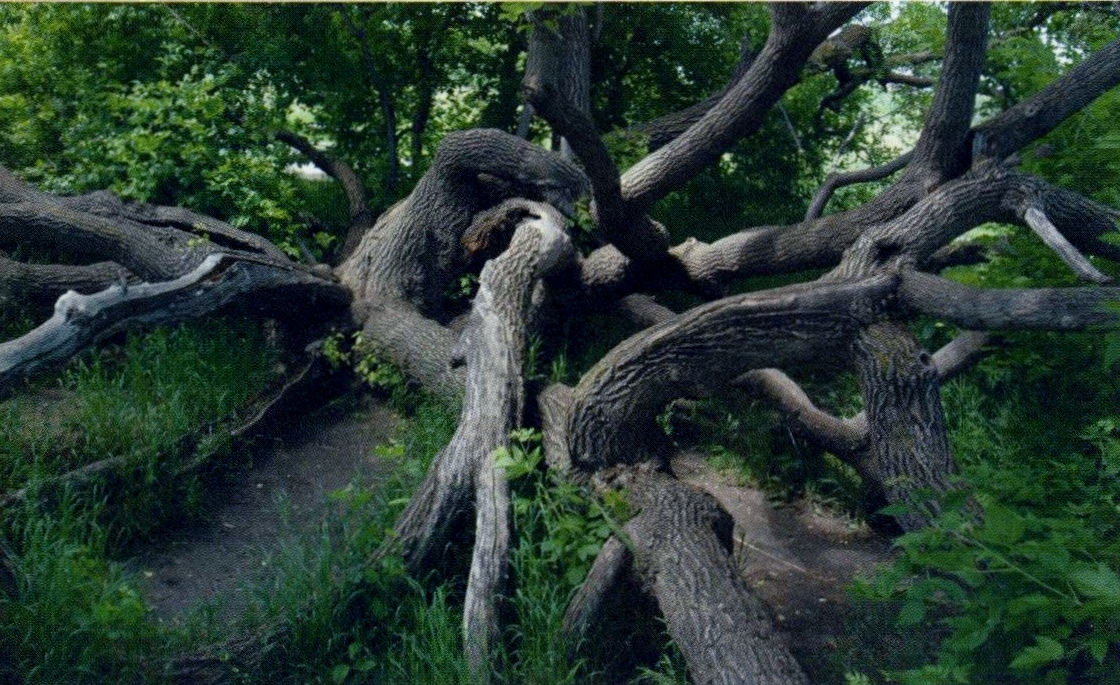
“Trees are the tent poles of the ecosystem” – Andy Lipkis
“A society grows great when old men plant trees whose shade they know they shall never sit in”– Unknown

“Trees are the tent poles of the ecosystem” – Andy Lipkis
“A society grows great when old men plant trees whose shade they know they shall never sit in”– Unknown
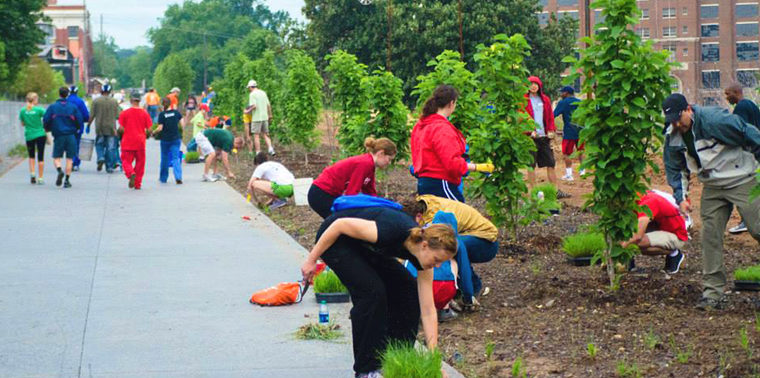
 Photo courtesy of Trees Atlanta
Photo courtesy of Trees AtlantaJuly 14, 2017 — Brilliant shades of purple, yellow and orange beckon hikers and bikers to maturing meadows in the urban center. Parents stroll children along trails cooled by the fragrant breezes of native magnolia, dogwood, oak and long leaf pine trees. Families picnic near a 40-foot cascading waterfall.
This scene in the heart of Atlanta, Georgia, is a far cry from what it was nine years ago. Back then, trucks illegally dumped toxic chemicals, trash and tires here. Kudzu and other weeds flourished, forming ad hoc habitat for rats and copperhead snakes.
Now, the Atlanta BeltLine is wiping out blight with 33 miles of multi-use trails along a historic rail line that encircles the city’s core. The ring of infrastructure is boosting environmental awareness in a metropolis that has been better known for suburban sprawl than parklands. Although other cities are turning abandoned tracks into greenways, the US$4.8 billion project connecting 45 neighborhoods offers unique lessons on urban renewal.
Master Vision
It was a master’s degree thesis that sparked the movement to build the BeltLine. In 1999, Ryan Gravel, then an architecture student at Georgia Tech, envisioned and fleshed out a plan to build a modern transit system to replace a ring of decaying rail tracks that encircled the capital city.

Atlanta’s BeltLine is replacing urban blight with multi-use trails and greenery along 33 miles of former rail line. Map courtesy of Atlanta BeltLine, Inc.
It took several years of negotiating among politicians, city officials, community advocates, real estate developers, landscape architects and environmentalists to solidify a proposal. Then, in 2006, Atlanta established the Atlanta BeltLine, Inc., known as ABI, to lead a renovation funded by private donors and the city that includes bike trails, parks, water management systems, housing, electric transit, art sculptures and more. According to Gravel, the project is the most extensive of its kind in the United States.
“I wanted to make Atlanta a place I wanted to live in,” he says. “Who would have thought that this idea would take off? It has been fun, excruciating and rewarding.”
Bringing Back Biodiversity
This network-in-the-making is boosting environmental awareness in a city that used to be better known for its traffic jams and sewage-polluted streams. Efforts to clean up 1,100 acres (450 hectares) of contaminated brownfields and plant more than 3,000 indigenous trees and grasses are bringing back biodiversity not seen in decades.
“The native plantings they have done had a tremendous positive impact,” says Berry Brosi, associate professor of environmental science at Emory University. “We found enormous areas in terms of pollinator abundance.”
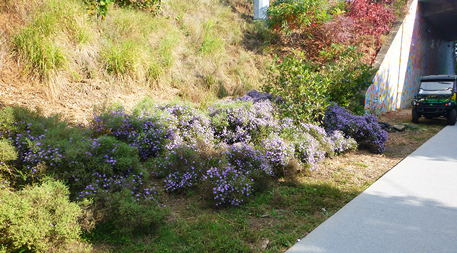
Pollinator-friendly vegetation is helping boost biodiversity and rebuild healthy ecosystems along the trail. Photo courtesy of Trees Atlanta
In fact, an unpublished study Brosi conducted found on average three times as many bee species and five times as many bees in pollinator planting sites along the BeltLine than in mowed grass.
“I noticed for the first time in my backyard, we are seeing bees, butterflies, even fireflies, which is different than four years ago,” says Chad Ralston, who lives nearby and bikes almost daily.
One major reason for the increase in biodiversity has been the native forest created under the supervision of Trees Atlanta, a non-profit organization dedicated to protecting Atlanta’s urban canopy. Trees Atlanta has planted 19 acres (8 hectares) of indigenous trees and grasses around the abandoned tracks. Ten more acres of reforestation are planned for next year.
“It has been a challenge in what different parts of the community want and what we want,” says Greg Levine, the organization’s co-executive director and chief program officer. Local residents like the green space, Levine says, but often prefer it manicured.
“They want more mowing, and then you don’t have the pollinator habitat,” Levine says. “They like the look of a meadow, but it takes three years.” Levine says Trees Atlanta and the city have reached an agreement to just mow along the edges of the path once a year, keeping the trails clear. Goats are also used to munch on the nonnative kudzu for environmental and economic benefits.
Economic Boon
As Head of Growth and Grassroots for ASW Distillery, Ralston helped convince his company to open a new location on a part of the BeltLine known as the Westside Trail. The real estate in the vicinity is booming and is the biggest economic driving force in the city, says Atlanta mayor Kasim Reed.
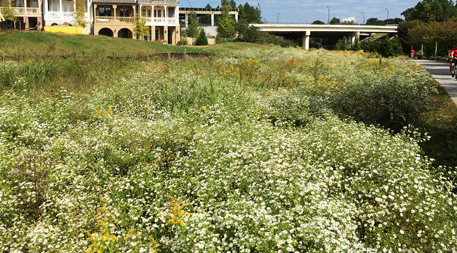
Real estate is booming along the BeltLine. Photo courtesy of Trees Atlanta
Meanwhile, Atlanta is discovering that going green can save money. The city was planning to build a US$40 million concrete vault and tunnel system to store stormwater in the Fourth Ward. Every time it rained flooded sewers sent pollution into local streams, and the city had already paid the federal government more than US$19 million in fines for its cracked and broken sewer system.
ABI stepped in to work with city officials to develop a better way to deal with storm water and sewage. The plan was to build a park bordering the Eastside Trail that recycles stormwater for a lake, fountain and waterfall. The ABI team saved the city at least US$15 million in stormwater infrastructure costs with its innovative design for the Historic Fourth Ward Park.
Cost savings “are where we hook people in,” says Heather Hussey-Coker of ABI. “But we solved one of the issues in a green way, a beautiful way.”
“The park has won awards for its plantings [and] wetlands, now home to Canada geese, ducks and turtles,” says Kit Sutherland, a community advocate who helped build the 17-acre (7-hectare) park. It also set the standard for how the BeltLine and Atlanta work together to transform former industrial areas whose belching chimneys earned them the title of “sewers of smoke.”
The Atlanta BeltLine is trying to create more energy than it uses, too. An architectural solar canopy provides shade and sells electricity back to Georgia Power. Solar-powered trash compacter bins help save the city time, energy and money by wirelessly transmitting signals to garbage collectors when it’s time to empty the cans, instead of having trash picked up on a schedule even if the cans are not full. LED lampposts line pathways, saving electricity and minimizing light pollution.
The city’s West Side is about to get a big boost because of the BeltLine. An abandoned quarry will soon add 300 acres (121 hectares) of green space adjacent to the Westside Trail. The new Westside Reservoir Park will be a source for 30 days of water, instead of Atlanta’s current three-day supply. Even though last year’s drought has ended, Atlantans still face watering restrictions because the city’s major reservoir is below full pool. Lawns can only be watered two days a week, and home car washes are forbidden.
Changing Lifestyles
Reed says the corridor is altering the way people get around. “It’s a healthy form of mobility. The bike paths and trails are changing the way in Atlanta we live,” he says. “The greater the density, the less pollution.”
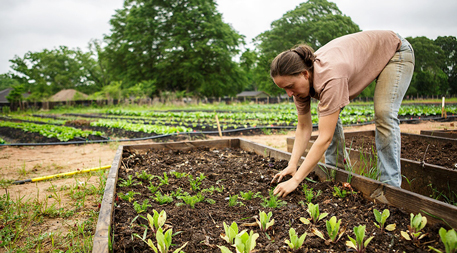
BeltLine designers turned a former bus repair facility along the route into a 6-acre urban farm. Photo courtesy of Atlanta BeltLine, Inc.
It’s changing diets, too. BeltLine designers transformed an old bus repair facility with underground fuel tanks into a 6-acre (2.4-hectare) urban farm. They cleaned up arsenic-stained soil and excavated buried garbage to revitalize the ground. Now urban farmers produce an abundance of cucumbers, tomatoes, carrots and other vegetables that feed a neighborhood unaccustomed to fresh produce. The rest is sold at the nearby Ponce City Market, once an abandoned department store that has been revitalized into a thriving shopping and food court that serves as the commercial anchor of the BeltLine.
But success is triggering new problems. With the real estate boom catalyzed by the BeltLine’s infrastructure, affordable housing is scarce, and the trail is crowded. There is little research on the environmental impacts the increased density and expanded use have spawned. Construction of 22 miles of light rail transit next to the paths is expected to alleviate some of these concerns.
“The light rail will help with changing lifestyles,” says Ralston. “I’m one of those millennials. I don’t care to drive. I don’t like sitting in traffic.”
“I get it,” Gravel says. “There is anger about the BeltLine being overcrowded. I bike. But that just means we need more bike lanes.”
Mildred Spalding, a biker who has lived in Atlanta for 43 years, was one of the 1.7 million Eastside trail users last year.
“It’s the best thing ever to happen to Atlanta,” she says. “It’s changing how I think of Atlanta.”
For Gravel, the BeltLine’s visionary, it’s a dream come true, not only professionally but personally as well.
“Not long ago, I had to take my kids with me to the grocery store,” he says. “My kids didn’t want to ride in the car. ‘Can’t we ride our bikes instead?’ Of course we can, that’s what people in Atlanta do. We ride bikes to the grocery store.” ![]()
Editor’s note: Judith Moen produced this feature as a participant in the Ensia Mentor Program. Her mentor for the project was Nate Berg.
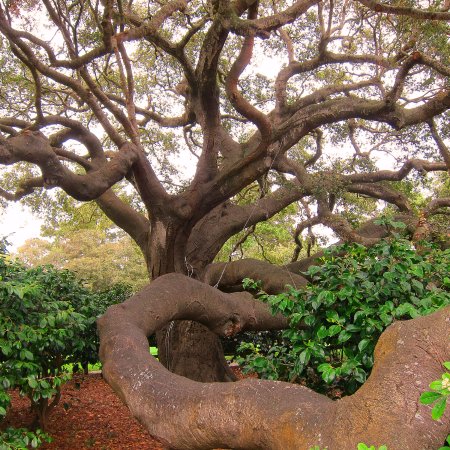
Devendorf Park is Carmel’s central gathering place, from plein air painting, Veterans and Memorial Day remembrances, to the annual tree lighting in the park. J. Frank Devendorf known as the Father of Carmel-By-the-Sea gave the land to the city; his grandson remains in Carmel-by-the-Sea – Jack Galante, a purveyor a bold red wines. The park occupies the block at Ocean and Junipero Avenues. This well-maintained urban oasis is shaded by several massive live oaks. Flowers accent on of the entry points at the corner of Ocean and Junipero. Year-round, Carmel holds special events in the park to mark the holidays. There’s breakfast with the Easter Bunny, the exciting Fourth of July Party, the Halloween Parade, and a festive Tree Lighting with Santa.
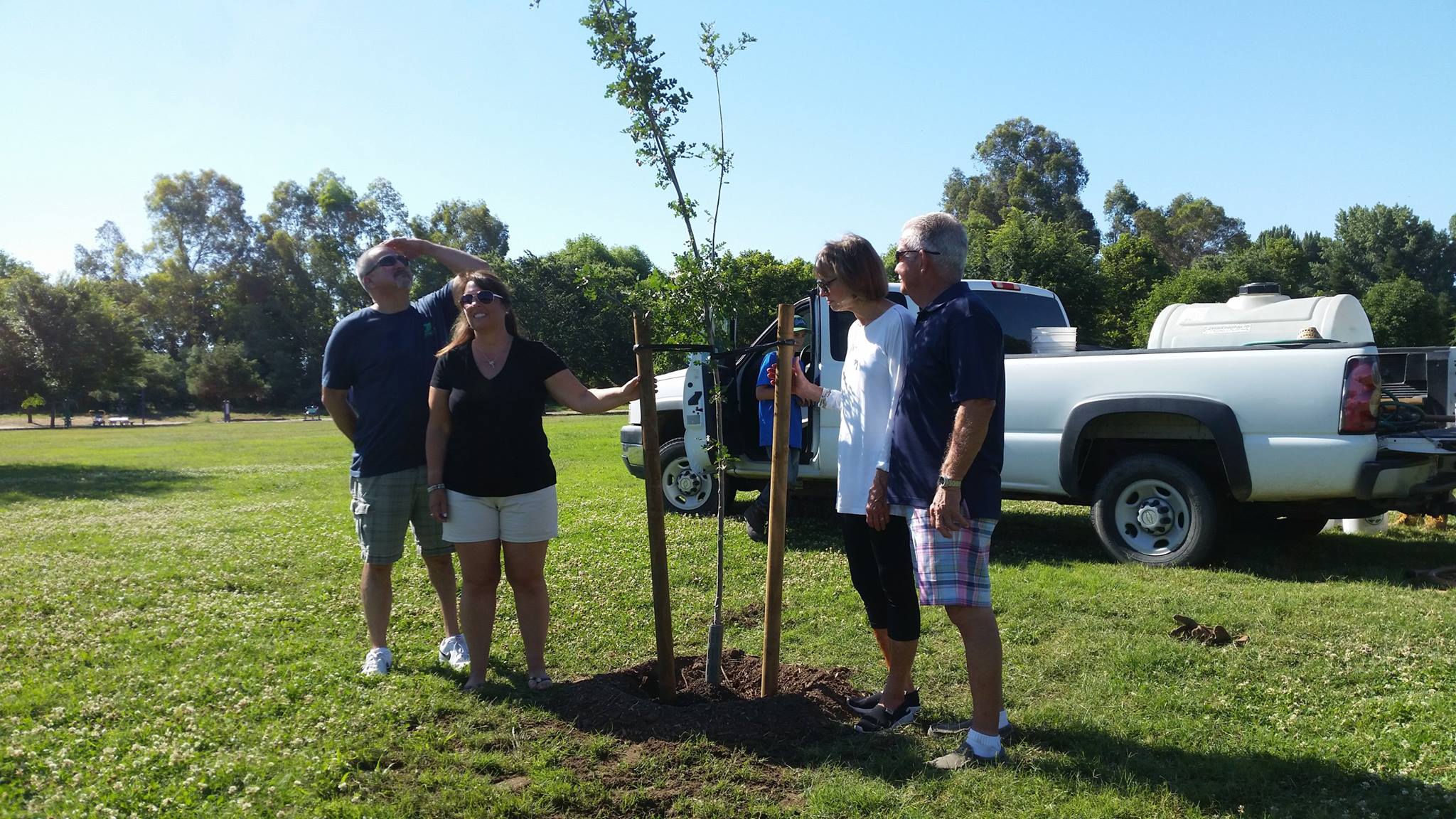
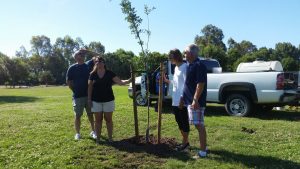
On June 17th 2017, a Tribute Tree was planted in memory of Carol Insalaco Winter at Dry Creek Park in Clovis, California. Carol was the 6th of 7 children, growing up in a very sports oriented family. After high school, Carol, tired of the cold winters and snow of MA, moved to California. Carol had a great life, a loving family, a beautiful home and lots of great friends. In 2010 Carol was diagnosed with breast cancer. Over a seven year period she fought with courage, dignity, poise and class.
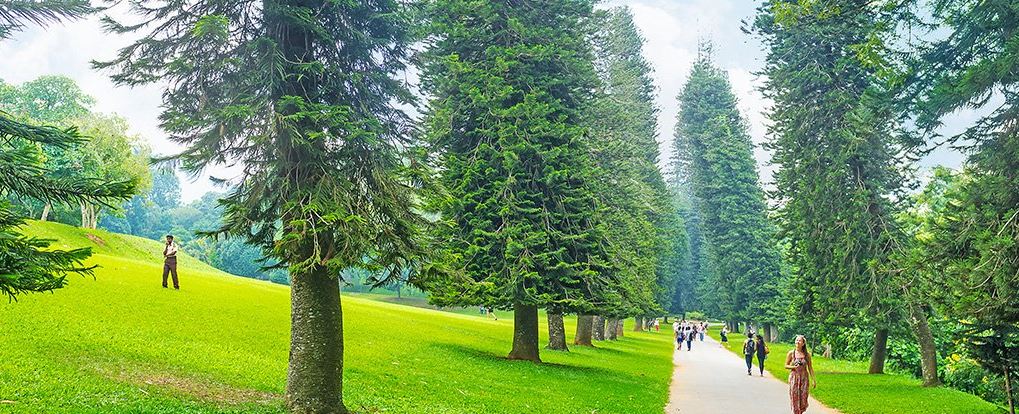
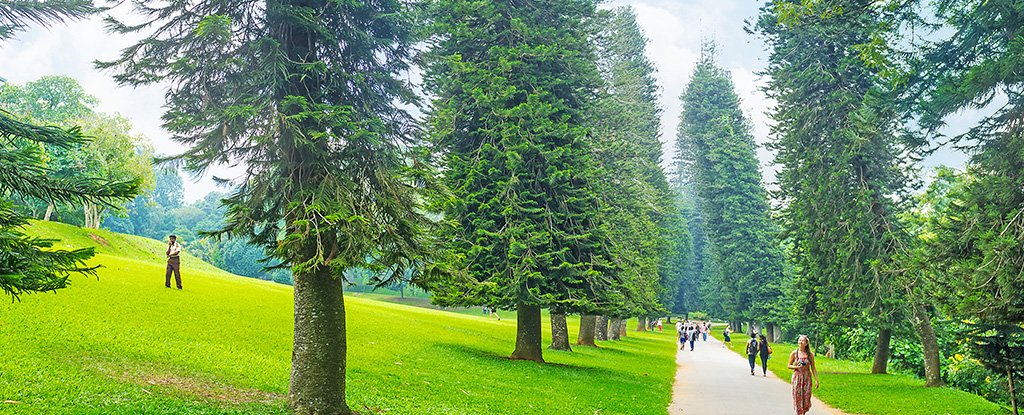
But how do they do it?
You can find them in many places around the world – tall, lean conifers that can’t seem to grow straight. And now scientists have figured out that the direction these Cook pines (Araucaria columnaris) lean is always towards the equator, but they’re not quite sure why.
Scientists have measured these trees across five continents and, for the first time, documented a species with a leaning pattern that appears to be hemisphere-dependent.
Cook pines originally come from New Caledonia, a tropical archipelago in the southwest Pacific Ocean. The trees were first classified during Captain James Cook’s second mission to circumnavigate the globe.
These stately pines are a popular choice for parks and gardens in many parts of the world. They can grow up to 60 metres tall (197 feet), and due to their short branches, they have a characteristic narrow appearance.
But even more characteristic is a propensity for a drunken-looking slant.
“When grown outside of its native range, this species has a pronounced lean so ubiquitous that it is often used as the identifying characteristic for the species,” the researchers write in their paper.
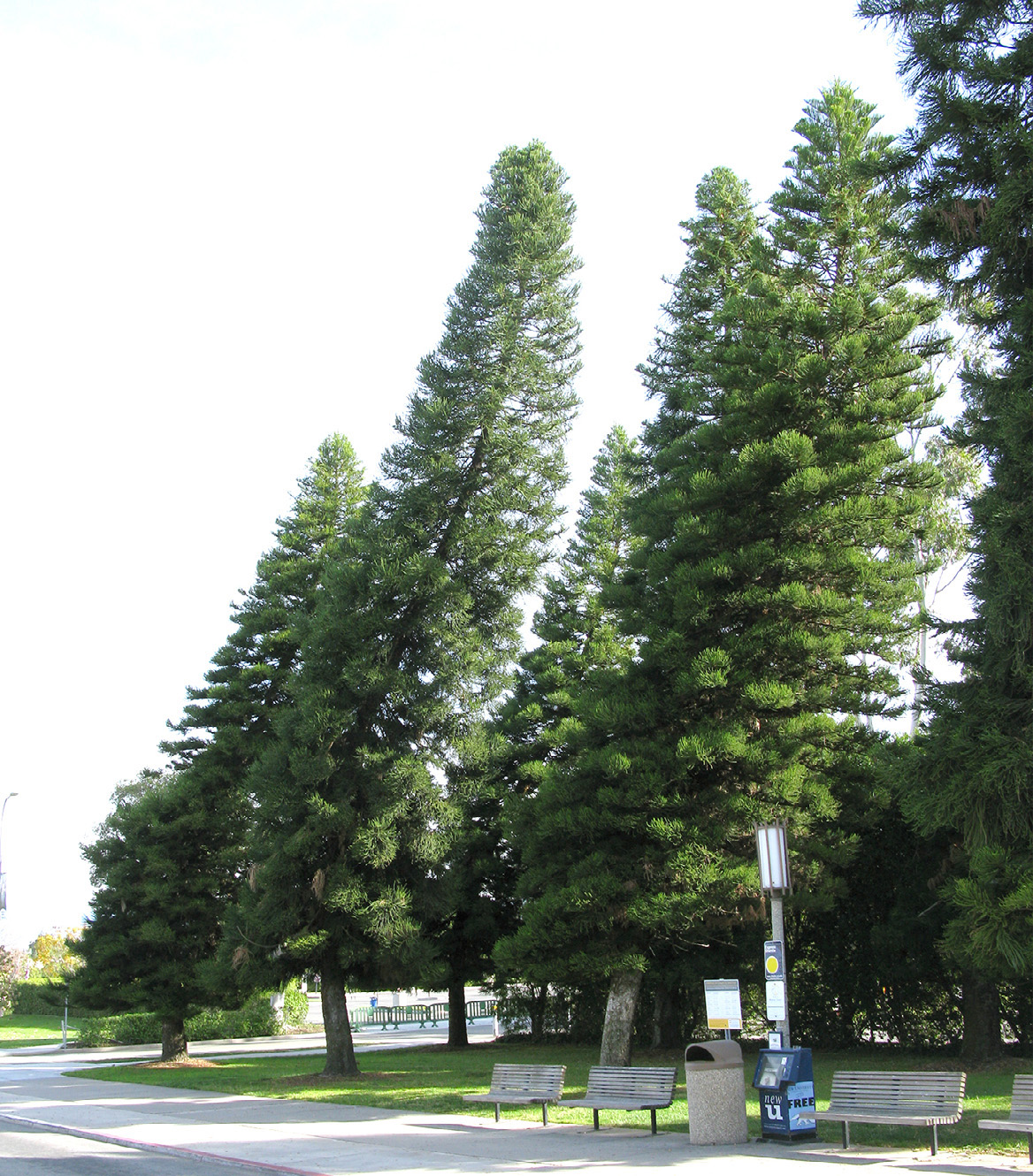 Leaning pines on the campus of the University of California, US. Photo: Johns et al., Ecology (2017)
Leaning pines on the campus of the University of California, US. Photo: Johns et al., Ecology (2017)
It started out as an anecdotal observation – one of the researchers, botanist Matt Ritter from California Polytechnic State University, noticed that in California and Hawaii, the pines all seemed to be leaning south.
But A. columnaris are also commonly grown in Australia, where one of them has even become an infamous leaning Christmas tree in the town of Lismore.
And weirdly enough, colleagues told him that the tilt in the southern hemisphere is directed towards the north.
To investigate this, Ritter and his team gathered measurements from 256 trees across 18 regions on five continents, including the species’ native range in New Caledonia.
The researchers excluded any trees whose growth could be impacted by another object, such as a building or electricity pole.
They recorded the height of each tree, trunk diameter, as well as the compass direction and extent of the lean, and to their surprise, Cook pines turned out to be more systematic in their leanings than anyone could have expected.
“We uncovered a surprisingly consistent pattern of hemisphere-dependent directional leaning in A. columnaris,” the team reports.
On average, the pines tilt by 8.05 degrees, leaning south in the northern hemisphere, and the opposite direction in the southern hemisphere. Less than 9 percent of the trees measured didn’t conform to this pattern.
And latitude makes a difference, too – the further away the trees grew from the equator, the greater the slant. So instead of labelling them drunks, it could have something to do with sunlight.
Many plants, including conifers like these pines, are known for their propensity to lean towards a light source when it’s not directly above the shoot – a characteristic known as phototropism.
But there’s a different plant characteristic that helps trees stay upright – their ability to detect gravity at a molecular level, and therefore direct roots and shoots in the correct directions (towards and away from the ground, respectively).
Even if a baby tree develops a tilt towards the sun, as the plant matures it tends to correct this asymmetry and grow upwards, unless there’s an environmental force preventing this, such as really strong prevailing winds in one direction.
But for some reason, A. columnaris just keep on tilting, no matter how tall they grow. And they even appear to be unique in this regard, because other Araucariaspecies from New Caledonia can stand up straight no matter where in the world you plant them.
It’s possible that Cook pines have a genetic quirk that allows them to lean, seeking out more sunlight in latitudes other than their native range. But scientists think that gravity and even Earth’s magnetic field could be playing a role, too.
“The mechanisms underlying directional lean of A. columnaris may be related to an adaptive tropic response to the incidence angles of annual sunlight, gravity, magnetism, or any combination of these,” they write.
Of course, the researchers are hoping to investigate further. They think that further studies of the species could even lead to discovery of little-known mechanisms that plants use to respond to environmental cues.
The study was published in Ecology.
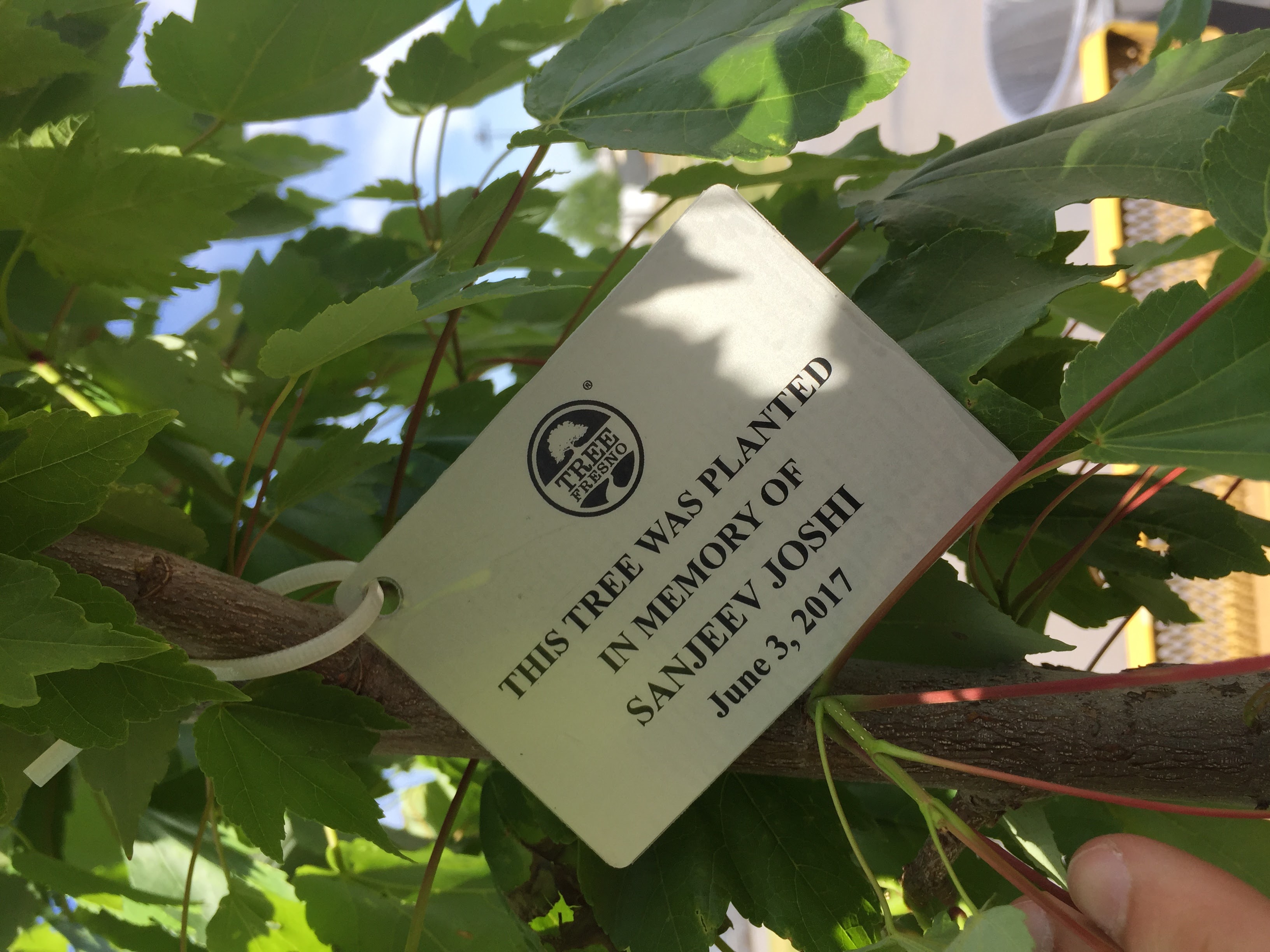
On Saturday June 3rd at 9:00 am friends and family came from all over the state to honor Sanjeev Joshi with the planting of an October Glory Maple Tribute Tree.
Sanjeev was an incredibly caring and compassionate friend, brother and son. He graduated from Edison High in 2008 and was very active during his time at Edison. He served as president of the student body and a member of the varsity soccer team, all while juggling Advanced Placement (AP) coursework. After graduating from Edison, he attended Cal Poly San Luis Obispo. He passed away in 2013. His Tribute Tree is located in the main courtyard at Edison High School, as part of the Tribute Tree ceremony, two more October Glory Maples were planted on either side of Sanjeev’s Tribute Tree to create a grove.

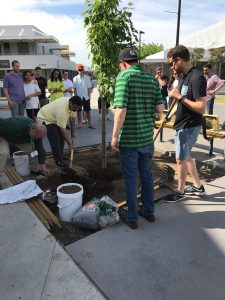
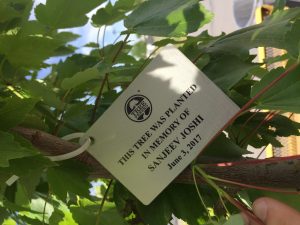
John DeGoede paying tribute to his dear friend.